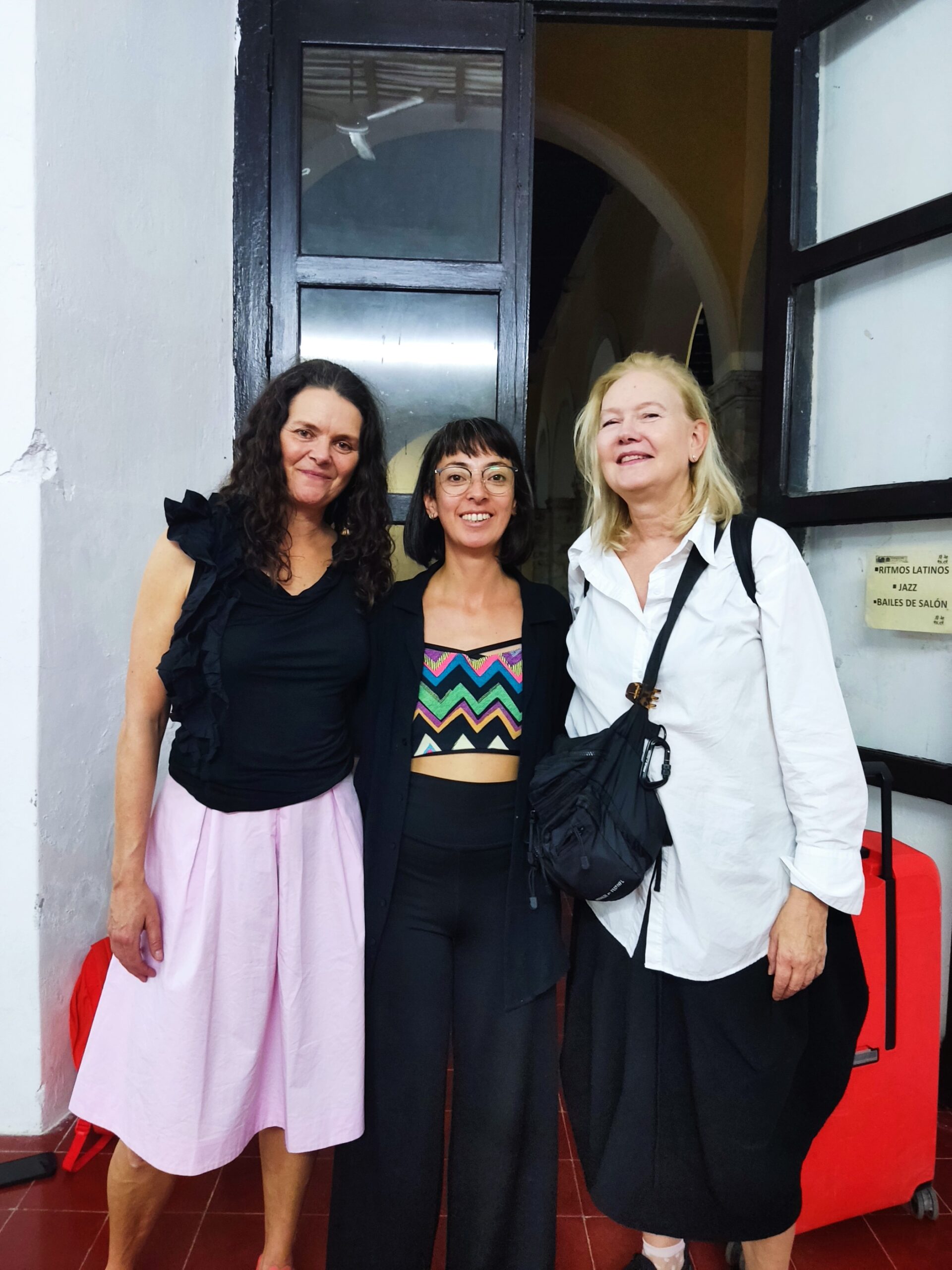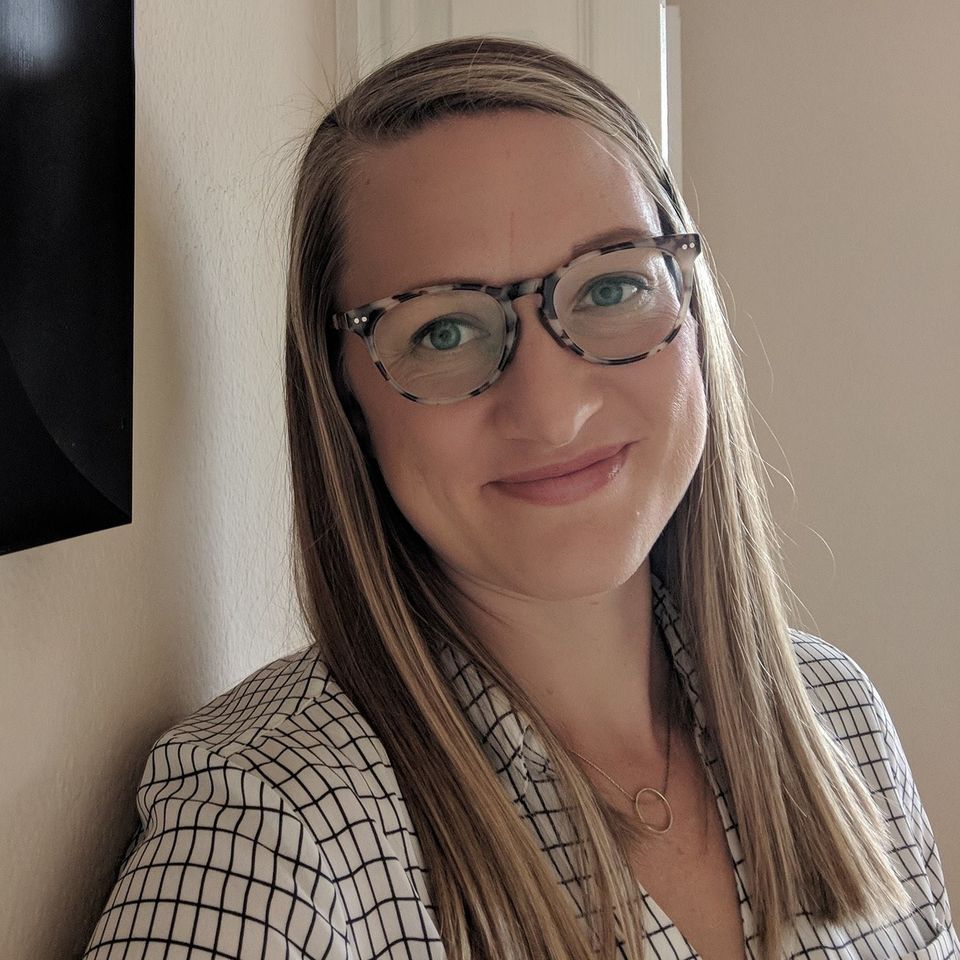MAKE YOUR EVENT SWEEP LATIN AMERICA OFF ITS FEET
Interpreting
Did you know 80% of people engage with content only if it’s in their own language? Speaking the native language of your Latin America audience would save you so much time and money but…
- Your Spanish is no bueno, and you have no time to become fluent enough.
- Hosting a multilingual meeting or festival sounds daunting.
- Live translators with an artistic background don’t grow on trees.

While you’re still on mute, your Spanish audience is waiting to hear about your art work.
Let’s set up the mics for your big debut!
ONLINE SIMULTANEOUS TRANSLATION
Many music and dance festivals, biennales, conferences, and workshops around the world are offering multilingual online access to connect with global audiences. Spanish simultaneous translation (interpretation) will help you reach over 500 million people.
You can speak and listen in English (and/or French) even from the comfort of your home in Montreal or New York, while your Spanish-speaking guests or keynote speakers connect from Bogota or CDMX using their native language.
You don’t have to worry about the logistics. Just connect to your favorite online meeting platform (like Zoom), choose your language of preference, and the magic happens, like in the United Nations! The UN is actually one of my clients =).
You can relax while I draw on my experience organizing meetings and conferences in multiple languages simultaneously, with hosts and guests worldwide.
It sounds fancy but it’s not as expensive as you might think. It’s a smart investment if you’re ready to see your global visibility take off.
Meridian Muse is here for you if you want to host an online multilingual artistic event and want some advice. Feel free to contact me for more information. I’ll gladly guide you to find the best solution depending on your needs and budget.

HI! I’M SALOMÉ SALAZAR.
I’VE GOT THE SUPERPOWERS TO BRING YOU CLOSER TO THAT SPANISH-SPEAKING PUBLIC YOU’VE BEEN DREAMING ABOUT.
SET YOURSELF APART. ENGAGE A GROWING SPANISH-SPEAKING AUDIENCE.
WHAT MAKES MY WORK DIFFERENT?
- I have an unusual combination of skills: I’m an English/French to Spanish interpreter with a deep artistic sensibility.
- I live and breathe art, like you. My purpose is very clear: to help you share your art with the world through impeccable and creative simultaneous translation.
- I’ll take care of ALL your communication in Spanish: in written, audiovisual, and live format. So you can just focus on what you love: creating.
MY METHOD
- Comprehensive research about your artwork, your context, and your needs.
- Use of top-notch resources for smooth (online or in-person) simultaneous interpretation.
- Close collaboration with my professional team of native Spanish, English and French art and language experts.
- Continuous communication with you to ensure we’re 100% aligned.
- A follow-up session to make sure you’re satisfied and that all your expectations have been met.
WHAT CREATIVES SAY ABOUT ME
Camp_In Festival in Mexico
English - Spanish live translation/ interpretation
Cross-cultural communication for City Horses (Sweden) dance performance residence in Merida, Yucatán.
"Having English-Spanish translation is proof of the high quality of this festival. Salomé did a great job breaking the language barrier. She was always making sure everyone understood each other during the learning process. I'm grateful to Salomé and I hope she can help us again in future editions of the festival"
Fanny Ortiz - Mérida
Abby Lawson
Writer
I had the pleasure of spending a week in Ecuador with Salomé where she was the translator for our group. She was confident and professional, as well as caring and insightful. She was the perfect bridge between our group and the people we were seeking to connect with, exhibiting patience and compassion as she helped us navigate through conversations. I would highly recommend Salomé and would travel with her again in a heartbeat!
Mary Younkin
Author
I worked with Salomé for 9 days on our recent trip to Ecuador. Her assistance was invaluable. I highly recommend her services!
Ingrid Holm
Creative Translator
I hired Salome to translate my website into Spanish and I could not be happier with the results. I was looking for a certain tone, and she recreated it perfectly in Spanish. Not only does Salome have impressive credentials and education, but she really understands the art of translation and the importance of communicating with her clients to make sure the final product is exactly what they had in mind. I highly recommend her for all your translation and interpreting needs!
Rebecca Lindamood
Book Author
Salomé was our interpreter on an extended trip in Ecuador last month. She accompanied our large group on all of our activities and was incredibly helpful. I highly recommend her!
THE STEPS
1. We have a chat to talk about your event, needs, and objectives.
2. You receive a proposal with a tailored solution that will include the scope and payment details for the service.
3. If necessary, I give you a brief call to clarify any further details about your event and make sure we’re on the same page.
4. Your event is translated live according to the conditions you and I agreed upon.
5. We have a follow-up meeting to see what we can improve for next time.
6. You’re happy, your international audience is happy, and you’re looking forward to your next multilingual event!

AND YOU’LL GET THIS BONUS
At this point, I’ll probably have fallen in love with your creative work (sorry, I can’t help it) so I’ll be happy to give you a couple of tips to engage your Latinx audience even more.

THE METHOD DOES NOT INCLUDE
Interpreting equipment for in-person events (I can help you choose a provider)
RATES
I don’t want you TO LEAVE thinking you’ll need to go bankrupt to host a multilingual event, so here’s a simple table to give you an idea of my average rates.
INTERPRETING
English to Spanish and vice versa
French to Spanish
Full day* (up to 8 hours)
USD 450
Half-day*(up to 4 hours)
USD 250
One hour (exceptional cases)
USD 150
*Events lasting more than one hour require a second interpreter.
*With consecutive interpreting (no equipment), the rate increases by 15%. For more information about interpreting styles, go to FAQ.
Final prices depend on the type of interpreting (consecutive, simultaneous, whispering), number of days, complexity of the topic, and setting (online, in-person, hybrid)
Want a customized quote? Click down here
faq
What are your payment methods?
Bank transfer (USA and Ecuadorian account), Zelle, Wise, PayPal, or cash (directly in my office, which is currently in Quito or Montreal, depending on the time of the year). I’m working on additional options, too. Drop me a line if you have another payment method we can use.
When will my translation be ready?
Delivery time depends on the total number of words and format of your project. But to give you an idea, translating a text of 2,000 words (6 – 8 pages) that is pretty straightforward (no technical terminology, etc.) takes around 1 to 2 working days. Subtitling a film takes around 10 working days.
For shorter deadlines, there is an additional charge of around 30%.
When will my voice-over audio be ready?
Delivery time depends on the length, complexity of the script, the recording studio and editing requirements of your project. As a rough estimate, a one-hour voiceover project might take from 4 to 6 hours and total.
For shorter deadlines, there is an additional charge of around 30%.
What is the difference between translating and interpreting?
Great question! The difference is that translation is written while interpreting is oral. Interpreting (also called live translation) can be simultaneous or consecutive. For more details about the differences between those two, look at the answer to the next question.
In live translation/interpretation, interpreters listen to the speaker in one language and translate the message into another language almost instantly, usually with a headset and microphone. This can happen at in-person or virtual events.
Translation of written words works differently. Translators are language experts and researchers. Meridian Muse is a translation studio specializing in performing arts, so I don’t mind spending quite some time learning about that new artistic trend you mentioned in your article to find the perfect equivalent in Spanish. Professional translation goes beyond finding the corresponding words in another language. AI or machine translation already do that. Professional translation captures the essence and intent behind words, ensuring clear communication across languages and cultures. Most of the times it involves a whole lot of research and a good network of field expert friends and colleagues to double-check terminology, nuances and style. That is why translation takes longer than you might think.
Do you use AI for translating?
The answer depends on your needs. Although Google Translate is doing an increasingly better job, professional translators use more sophisticated AI tools, like neural network methodology and LLM to produce a first draft for less demanding non-creative translation projects. This first draft gets the job done if a lower budget and a quicker turnaround are major issues. It’s good enough for internal draft documents or when you just want to get the gist of something.
If that’s what you want, I can give you that neural machine-translated text, using my insiders tool. If you need an additional layer of quality, I can also review that first-draft type of text for a more decent result, without fatal errors and hallucinations. It’s going to be far from perfect, but it will be a bit more reliable.
As a translator, I enjoy using AI because I don’t have to type everything from scratch and sometimes machine translation results make me laugh, like when it translated “Quito, Ecuador” as “I Quit, Ecuador”.
Also, bear in mind that hallucinations are still quite common in artificial intelligence and machine translation, which can lead to fatal errors, hurting your reputation and having potential clients and partners never coming back.
If you want something more reliable, nuanced and creative, you want a human and professional translator working on your text from the beginning. It’s pricier and takes more time, like all good things in life. You have already spent a good amount of time and energy building a reputation in your native language, so why compromise your international image at this stage? Remember, you have over 500 million potential Spanish-speaking readers. Don’t miss the opportunity to make a first great impression on them.
Whatever you decide, we can find a solution that fits your budget and needs. Don’t hesitate to get in touch with me. I’m always happy to hear about your exciting internationalization projects!
Why do interpreters need me to share material about my event well in advance?
As interpreters, we take a day or two before the event to prepare. If you and I decide to work together, I will spend some time learning about you, your context, your communication goals and the topics you will cover at your event. I will build a bilingual (or trilingual) glossary of terms that might come up based on the material you have shared with me. Preparation time is essential, as it is not easy to have the right word at the tip of your tongue when your brain is juggling two languages at the same time.
So, the more information you provide, the more background knowledge and vocabulary the interpreters will have about the topic. This means the live translation will go smoothly and everybody will have the chance to communicate to their heart’s content.
Are you worried about confidentiality? For interpreters and translators, confidentiality is part of our code of ethics. But if you want to take extra measures, we can sign an NDA (Non-disclosure agreement) so you have peace of mind.
What kind of live translation/interpreting is best for my event?
To keep it simple, let’s talk about the two main types of interpreting:
Simultaneous Interpreting
The benefit of simultaneous interpreting is that your festival, conference, workshop, or meeting will run smoothly no matter what language(s) your audience or speakers understand.
Simultaneous interpreters listen to the speaker through a headset and render the message in the target language into a microphone in real time. This kind of interpreting requires an extremely high level of concentration and energy. This is why, according to international standards, we work with special equipment and in tandem for events of more than an hour. This way, we work in 20-minute shifts, which keeps our brains from exploding from cognitive overload and ruining your event.
Consecutive Interpreting
This method is useful when interpreting equipment (booth, headsets, console) cannot be used, like at on-site visits, press conferences, job interviews, small meetings, etc.
With consecutive interpreting, if you are the speaker, you take the floor for 1 to 3 minutes (let’s say in English), and then I, the interpreter, step in to render the message in the target language (in Spanish). If someone wants to say something in Spanish, they take the floor, pause after a couple of sentences, I translate everything back into English, and so on. You might think this type of interpreting is less expensive than simultaneous interpreting because, in some cases, one interpreter can cover your event instead of two (with the necessary breaks), and you don’t have to rent special equipment. However, your event ends up lasting almost twice as long as it would with simultaneous interpreting, making your event less cost-effective.
Deciding whether to hire interpreters for simultaneous or consecutive interpretation requires a good understanding of the setting, goals, and constraints of your event, while considering the pros and cons of each interpretation modality.
Luckily for you, I’m a member of AIIC, the International Association of Conference Interpreters, I have an M.A. in Interpreting from LondonMet University and over twelve years of experience serving clients in Europe and the Americas, so I know what I’m doing. I’ll be happy to help you choose the type of interpretation that works best for your next multilingual event.
Why do I need to hire two interpreters? I spoke to someone who said they could do it on their own.
Let me warn you about interpreters who say will translate your entire whole-day event on their own. Yes, there are probably a few who can do it without fainting in the middle of your meeting, and you’ll think it’s half the price and they get the job done, right?
But there is this little detail you might not be aware of, which is quality. It’s hard to objectively measure the quality of a simultaneous interpretation if you are not fully bilingual and can monitor the interpreter’s rendition while they are speaking.
But to give you an idea of how crazy it would be to have just one interpreter at your event, imagine yourself listening to an expert talk about performance statistics of the music industry while you are simultaneously saying that same message in a second language. No chance to look up for words or ask the speaker to slow down. No chance of missing a thing they are saying. No break for refilling your glass of water or a cup of coffee; not even for peeing! Do you think you could do it for several hours non-stop while maintaining the quality your listeners deserve? If you can, you’re using some dark magic because, according to several studies, simultaneous interpreters’ output quality drops after 40 minutes. After that, our brain needs a break. That’s we work in shifts of 20 or 30 minutes.
So don’t think you’re saving money by hiring only one interpreter. Having half the team means, in the best-case scenario, having half the message. You deserve more than that.
There are few exceptions where you can work with only one interpreter, like when there are significant breaks, and the event is pretty short. If your budget is tight, you’ll have to make some adjustments to the whole event if you want to work with just one interpreter.
If you want to host a multilingual event, I can guide you on what type of interpretation will work best for you depending on your goals, context, and budget. Get in touch!
Do you do online simultaneous interpretation?
You bet I do! Everything is becoming digital. This means that interpreters are going online, too. Online live translation allows you to host multilingual events no matter where you are.
Imagine hosting an in-person, virtual or hybrid conference in Toronto with speakers connecting from Buenos Aires and Brussels, and attendees from Bogotá and New York. Isn’t that exciting?
This is a perfect opportunity to make truly global connections and increase our impact!
Nowadays, the most widely used platform for online live translation is Zoom. You must have a Pro, Business, Education, or Enterprise account to have the virtual interpretation feature. If you don’t have it. No worries. I can help you with that.
Are you thinking of hosting a multilingual online event? Drop me a line at salome@meridian-muse.com. We can find the best solution for you to connect with your international audience.
I need voiceover for my video, promotional audio, or podcast in Spanish, English and French. Can you help me with that?
You bet I can. Meridian Muse offers professional multilingual voice-over services to carry your creative message to international audiences. Whether you’re presenting an exhibit, a documentary, or a podcast, I’ll capture the essence of your work and deliver it with passion in Spanish, English, and French.
Here’s a sample of my voice in English for Cholo Groove, a podcast where we explore music and culture.
What languages do you work in?
Like all truly professional translators, I only translate into my mother tongue, which means I do:
-French to Spanish translation
-English to Spanish translation
For interpreting/live translation, according to international standards, my language combination is Spanish A, English B, and French C. This means I work in the following directions:
-English to Spanish interpreting
-Spanish to English interpreting
-French to Spanish interpreting
If you need (live) translation into English or French, I’ve got you covered. Meridian Muse has a pool of professional translators and interpreters with those native languages. We are a team of language and art experts ready to make your art transcend boundaries.
What’s your language background?
FRENCH
I studied the French language and culture from an early age. I lived in Paris and studied French at La Sorbonne. During my time in France, I spent some time in Lyon, Nice and Aix-en Provence. I also traveled to other French-speaking countries like Switzerland, Belgium, and Monaco.
I also actively volunteered and worked as an interpreter and translator for several NGOs like Médecins du Monde and Emmaüs International, where I got familiar with a great variety of French dialects such as those spoken in Belgium, Côte d’Ivoire, and Congo. All of this helped me fine-tune my linguistic skills and have a deeper understanding of the French language and the beautiful diversity of its speakers.
I am also building personal and professional relationships with creatives and cultural organizations in Montreal, where I am based in the summer. If you work in the performing arts industry and you are in the area from May through November, drop me a line at salome@meridian-muse.com. It’s time to connect!
ENGLISH
My education in English started when I was a little girl, with after-school classes. Yep, I was a little nerd. I studied English-Spanish Translation in Ecuador and then moved to London to get an M.A. in Interpreting at London Metropolitan University. This renowned university works in cooperation with the Directorate-General for Interpreting of the European Commission, so I’m used to working at the highest professional standards in the world.
During my time in the UK, I also volunteered and worked as an interpreter and translator for NGOs like ICYCW and ATD Fourth Word. Living in a world capital like London helped me develop a better understanding of the great variety of English dialects such as those spoken in Scotland, Canada, India, South Africa, and Australia.
SPANISH
Spanish is my native language, but I have never taken it for granted. I’m constantly reading and expanding my Spanish vocabulary and register. My professional experience and travels have given me the chance to get familiar with different Spanish accents across the world.
Do you have any accreditations as a translator and interpreter?
Besides my B.A. in Translation and my M.A. in Interpreting from London Metropolitan University, I am a member of AIIC, the most renowned association of interpreters in the world. I am also a member of the International Federation of Translators, FIT.
Additionally, I am a certified member of ATIEC, the Ecuadorian Association of Translators and Interpreters.
Do you work with clients outside the arts industry?
Yes! While I mainly work with artists and creators, I also have a lot of experience working with NGOs in the fields of environmental conservation, international development and cooperation. My clients work on human rights, gender, LGBTQIIA+, feminism, activism, refugees, children, minorities, education, advertising, tourism, and conservation.
Do you provide any other language-related services?
Yes. At the moment I’m also exploring voice over in Spanish, English and French. I’ve been doing voice coaching, and with cool projects coming up, I am now the voice of a couple of advertising videos.
I also serve clients who want to internationalize their brand and want to have a multilingual communication strategy that takes language and culture into account.
Also, if you’re interested in Latin American music, check out Cholo Groove podcast. There, Javier Badillo, a Vancouver-based Ecuadorian DJ (with an amazing vinyl collection and music knowledge), and I explored how music and other artistic expressions have transcended boundaries. We have episodes in English and Spanish for you to enjoy. Look out for Cholo Groove on Spotify, Apple Podcasts, Google Podcasts and Anchor. Or go to the Cholo Groove section of my blog to find out more.
I’ve never worked with a translator or interpreter. Can you guide me?
I’d love to! Part of my job is to guide you, so you can make the most of my services. If you want to some advice, we can arrange for a consultancy session, too.
How do I book you?
Drop me a line at salome@meridian-muse.com with your request or send me a message via my contact page, and I’ll get back to you in the blink of an eye!
Where are you based?
I’m a bit of a digital nomad. I’m currently based in Ecuador and I travel a few months a year working and connecting with new creative minds across the globe.
I also spend a few summer months in Montreal almost every year. This year, I’m in Montreal from May to November.
Also, Throughout my travels, I’ve been building a global network of art workers interested in bringing their art to other corners of the world and collaborating globally.
Feel free to contact me if you want to be part of this growing network.





